
Owls are birds from the order Strigiformes, which includes over 200 species of mostly solitary and nocturnal birds of prey typified by an upright stance, a large, broad head, binocular vision, binaural hearing, sharp talons, and feathers adapted for silent flight. Exceptions include the diurnal northern hawk-owl and the gregarious burrowing owl.

Odonata is an order of predatory flying insects that includes the dragonflies and damselflies. The two groups are distinguished with dragonflies usually being bulkier with large compound eyes together and wings spread up or out at rest, while damselflies are usually more slender with eyes placed apart and wings folded together along body at rest. Adult odonates can land and perch, but rarely walk.

Stingrays are a group of sea rays, a type of cartilaginous fish. They are classified in the suborder Myliobatoidei of the order Myliobatiformes and consist of eight families: Hexatrygonidae, Plesiobatidae, Urolophidae (stingarees), Urotrygonidae, Dasyatidae, Potamotrygonidae, Gymnuridae and Myliobatidae . There are about 220 known stingray species organized into 29 genera.

The reticulated python is a python species native to South and Southeast Asia. It is the world's longest snake, and the third heaviest after the green anaconda and Burmese python. It is listed as least concern on the IUCN Red List because of its wide distribution. In several countries in its range, it is hunted for its skin, for use in traditional medicine, and for sale as pets. Due to this, reticulated pythons are one of the most economically important reptiles worldwide.

The harpy eagle is a large neotropical species of eagle. It is also called the American harpy eagle to distinguish it from the Papuan eagle, which is sometimes known as the New Guinea harpy eagle or Papuan harpy eagle. It is the largest and most powerful bird of prey found throughout its range, and among the largest extant species of eagles in the world. It usually inhabits tropical lowland rainforests in the upper (emergent) canopy layer. Destruction of its natural habitat has caused it to vanish from many parts of its former range, and it is nearly extirpated from much of Central America. In Brazil, the harpy eagle is also known as royal-hawk. The genus Harpia, together with Harpyopsis, Macheiramphus and Morphnus, form the subfamily Harpiinae.
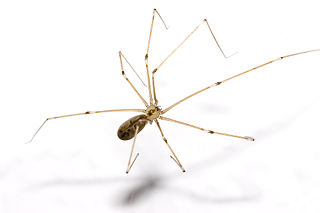
The Pholcidae are a family of araneomorph spiders. The family contains more than 1,800 individual species of pholcids, including those commonly known as cellar spider, daddy long-legs spider, carpenter spider, daddy long-legger, vibrating spider, gyrating spider, long daddy, skull spider, and angel spider. The family, first described by Carl Ludwig Koch in 1850, is divided into 94 genera.
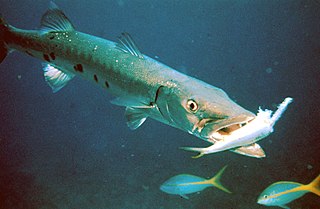
A barracuda is a large, predatory, ray-finned fish known for its fearsome appearance and ferocious behaviour. The barracuda is a saltwater fish of the genus Sphyraena, the only genus in the family Sphyraenidae, which was named by Constantine Samuel Rafinesque in 1815. It is found in tropical and subtropical oceans worldwide ranging from the eastern border of the Atlantic Ocean to the Red Sea, on its western border the Caribbean Sea, and in tropical areas of the Pacific Ocean. Barracudas reside near the top of the water and near coral reefs and sea grasses. Barracudas are targeted by sport-fishing enthusiasts.

The saltwater crocodile is a crocodilian native to saltwater habitats, brackish wetlands and freshwater rivers from India's east coast across Southeast Asia and the Sundaic region to northern Australia and Micronesia. It has been listed as Least Concern on the IUCN Red List since 1996. It was hunted for its skin throughout its range up to the 1970s, and is threatened by illegal killing and habitat loss. It is regarded as dangerous to humans.

Bungarus is a genus of venomous snakes in the family Elapidae. The genus is native to Asia. Often found on the floor of tropical forests in South Asia, Southeast Asia and Southern China, they are medium-sized, highly venomous snakes with a total length typically not exceeding 2 metres. These are nocturnal ophiophagious predators which prey primarily on other snakes at night, occasionally taking lizards, amphibians and rodents. Most species are with banded patterns acting as a warning sign to their predators. Despite being considered as generally docile and timid, kraits are capable of delivering highly potent neurotoxic venom which is medically significant with potential lethality to humans. The genus currently holds 18 species and 5 subspecies.

The North American river otter, also known as the northern river otter and river otter, is a semiaquatic mammal that lives only on the North American continent throughout most of Canada, along the coasts of the United States and its inland waterways. An adult North American river otter can weigh between 5.0 and 14 kg. The river otter is protected and insulated by a thick, water-repellent coat of fur.
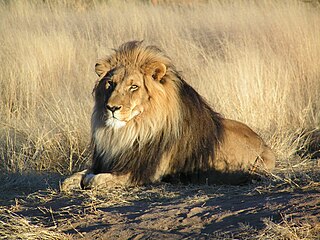
An apex predator, also known as a top predator or superpredator, is a predator at the top of a food chain, without natural predators of its own.

Mark Thomas Streit is a Swiss former professional ice hockey defenceman. He was formerly the captain of both the New York Islanders and the Swiss national team. Streit was one of the few swingmen in the NHL who could play both as a defenceman and as a forward. He was inducted into the IIHF Hall of Fame in 2020.

Syed Hussein Alatas bin Syed Ali Alatas was a Malaysian academic, sociologist, politician, and founder of social science organisations. He was Vice-Chancellor of the University of Malaya in the 1980s and formed the Parti Gerakan Rakyat Malaysia (Gerakan). Syed Hussein wrote several books on corruption, multi-racialism, imperialism, and intellectual captivity as part of the colonial, and postcolonial, project, the most famous being The Myth of the Lazy Native.

Belum-Temengor is the largest continuous forest complex in Peninsular Malaysia. Specifically, it is located in the Malaysian state of Perak and crosses into Southern Thailand. Belum-Temenggor is divided into two sections. Belum is located up north, right by the Malaysia-Thailand border, while Temenggor is south of Belum. The Royal Belum State Park is entirely contained within the forest complex. Bang Lang National Park is on the Thailand side of the border.
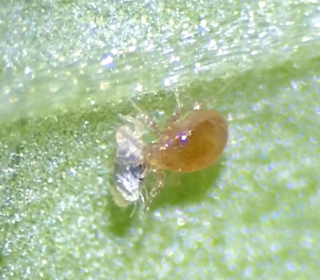
The Phytoseiidae are a family of mites which feed on thrips and other mite species. They are often used as a biological control agent for managing mite pests. Because of their usefulness as biological control agents, interest in Phytoseiidae has steadily increased over the past century. Public awareness of the biological control potential of invertebrates has been growing, though mainly in the US and Europe. In 1950, there were 34 known species. Today, there are 2,731 documented species organized in 90 genera and three subfamilies.

The Sunda scops owl is a small brown owl native to the Sunda Islands.
The false serotine bat is a species of vesper bat. It is found only in Malaysia.
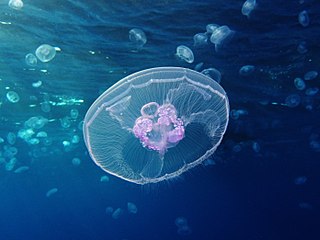
Aurelia is a genus of jellyfish that are commonly called moon jellies, which are in the class Scyphozoa. There are currently 25 accepted species and many that are still not formally described.

Emesopsis is a genus of tropical bugs (Heteroptera) from the family Reduviidae. There are at least 22 described species, of which one, E. nubila, also occurs in southern Europe.

The Indochinese leopard is a leopard subspecies native to mainland Southeast Asia and southern China. In Indochina, leopards are rare outside protected areas and threatened by habitat loss due to deforestation as well as poaching for the illegal wildlife trade. In 2016, the population was previously thought to comprise 973–2,503 mature individuals, with only 409–1,051 breeding adults. The historical range had decreased by more than 90%. However, as of 2019, it is estimated that there are 77-766 mature Indochinese leopards and that their numbers are decreasing.


















